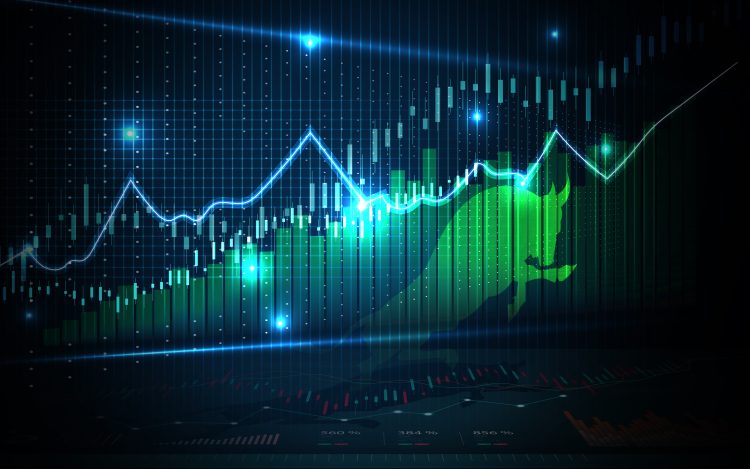The technology sector has seen an unprecedented surge in stock prices in recent years. Amid a global pandemic and rapid digital transformation, tech companies have become the cornerstone of modern economies, driving innovation, growth, and investment. But as the sector grows, so does the debate: Is the rally in tech stocks sustainable, or are we witnessing a bubble poised to burst? This article will explore the key drivers behind the performance of tech stocks, the concerns about their valuation, and investor sentiment moving forward. We’ll also address the broader implications of the tech stock boom for the global economy.
Introduction: The Surge in Technology Stocks and Whether It’s Sustainable
Over the past decade, the technology sector has been one of the most remarkable success stories in global markets. Stocks of major tech companies such as Apple, Amazon, Microsoft, and Alphabet (Google’s parent company) have soared to new heights, outperforming nearly every other sector. The COVID-19 pandemic only accelerated this trend, as businesses and consumers increasingly relied on digital solutions, e-commerce, cloud computing, and remote work technologies.
In 2020, when most sectors suffered under the weight of lockdowns and economic uncertainty, technology stocks defied expectations. The Nasdaq-100, a stock market index made up of the largest non-financial companies in the tech sector, surged by over 40%. But as stock prices continue to climb, many investors are asking: is this rally based on solid fundamentals, or is it simply a bubble waiting to burst?
The debate surrounding tech stocks is fueled by both optimism and caution. On the one hand, the pandemic exposed the critical role technology plays in modern society, making tech stocks seem like a reliable bet for the future. On the other hand, the rapid price increases raise concerns about overvaluation and the potential for a correction.
Key Drivers: What’s Driving the Performance of Tech Stocks—Pandemic, Innovation, and Digital Transformation
Several key factors have contributed to the stellar performance of tech stocks in recent years. These factors are not just about short-term market trends; they are the result of long-term changes that have positioned the technology sector as a driving force in the global economy.
Pandemic Acceleration of Digital Transformation
The COVID-19 pandemic acted as a catalyst for the digital transformation of businesses and consumers alike. With in-person interactions restricted and many people forced to stay at home, the demand for digital solutions skyrocketed. E-commerce platforms, video conferencing tools, cloud computing services, and streaming entertainment surged in usage as businesses and individuals adapted to the new normal of remote work and online shopping.
Companies like Amazon and Netflix saw massive increases in user engagement and revenue, while tech giants such as Microsoft, Google, and Zoom became essential tools for communication and collaboration in the workplace. This shift in consumer behavior drove earnings and propelled stock prices to new heights, as investors anticipated sustained growth in these areas.
The pandemic highlighted the necessity of technology in almost every aspect of life, from education to healthcare, and investors recognized the long-term potential of these innovations. The widespread adoption of digital platforms, online services, and cloud-based solutions made the tech sector more resilient and future-proof in the face of global disruptions.
Technological Innovation and Disruption
Beyond the pandemic, technological innovation has been a significant driver of growth in tech stocks. Advances in artificial intelligence, machine learning, autonomous systems, biotechnology, and fintech are reshaping industries and creating new investment opportunities. Companies at the forefront of these innovations are often rewarded with sky-high valuations, as investors bet on their ability to disrupt existing markets and generate massive returns.
For instance, Tesla’s meteoric rise has been driven by its innovation in electric vehicles and its potential to dominate the green energy sector. Similarly, companies like Nvidia, which specializes in graphics processing units (GPUs) used in AI and gaming, have seen their stock prices soar as demand for cutting-edge technology continues to grow.
Moreover, the shift to 5G networks and the growth of the Internet of Things (IoT) are creating new avenues for tech companies to expand their businesses. The potential for these innovations to unlock new revenue streams has created a positive feedback loop, where increased investor confidence fuels higher stock prices, which in turn attracts more investment.
The Digital Economy and Remote Work Revolution
One of the most transformative trends of the 21st century is the rise of the digital economy, and the pandemic only accelerated its growth. The transition to remote work and the digitalization of traditional industries has created new opportunities for tech companies to provide services and solutions that support this shift. Cloud computing, cybersecurity, digital payments, and collaboration tools have become indispensable for businesses operating in a digital-first world.
For example, Microsoft’s Azure cloud platform has experienced exponential growth, driven by the increasing need for businesses to store and process data remotely. Similarly, cybersecurity companies such as CrowdStrike have benefited from the surge in cyber threats, as more businesses and individuals rely on digital platforms for work and personal transactions.
The shift toward remote work has also propelled the demand for collaboration tools like Slack, Zoom, and Microsoft Teams, creating new business models for companies in the tech space. As more organizations embrace hybrid or fully remote workforces, the demand for technology that enables this model is expected to remain strong.
Valuation Concerns: Are Tech Stocks Overvalued?
While the tech sector’s growth has been impressive, it has also raised concerns about overvaluation. The rapid rise in stock prices, particularly for companies with high growth potential but limited earnings, has led some analysts to question whether the current valuations are sustainable. Several key metrics are being used to assess whether tech stocks are in a bubble or simply experiencing a justified boom.

Price-to-Earnings (P/E) Ratios
One of the most commonly used metrics for evaluating stock prices is the price-to-earnings (P/E) ratio, which compares a company’s stock price to its earnings per share. Historically, the average P/E ratio for the S&P 500 has hovered around 20-25, but many tech companies have seen their P/E ratios climb much higher. For instance, companies like Tesla and Amazon have P/E ratios well above 100, signaling that investors are willing to pay a premium for future growth, even if the companies are not yet profitable on a large scale.
While high P/E ratios are not necessarily indicative of a bubble, they do raise questions about whether investors are overestimating the growth potential of certain companies. If tech stocks fail to meet the lofty expectations baked into their valuations, a correction could occur, leading to a sharp decline in stock prices.
The Role of Speculation
In addition to traditional valuation metrics, some analysts are concerned about the role of speculation in driving tech stock prices. The rise of retail investing, fueled by platforms like Robinhood, has led to increased participation in the stock market by individual investors. While this democratization of investing has been positive in many ways, it has also led to heightened speculation, with many retail investors chasing the latest hot stocks without fully understanding the underlying fundamentals.
For example, stocks like GameStop and AMC Entertainment saw wild price swings in early 2021, driven by retail investors coordinating on social media platforms like Reddit’s WallStreetBets. While these stocks are not necessarily representative of the broader tech sector, they highlight the growing influence of speculative trading and the potential risks associated with it.
Interest Rates and Inflation Concerns
Another factor that could impact the sustainability of the tech stock rally is the potential for rising interest rates and inflation. As economies recover from the pandemic and central banks begin to tighten monetary policy, the cost of borrowing could increase, which would make it more expensive for tech companies to finance their growth. Additionally, higher interest rates could reduce the present value of future earnings, making high-growth tech stocks less attractive to investors.
Inflation concerns have also started to creep into the market. If inflation continues to rise, it could erode the purchasing power of consumers and increase costs for businesses, potentially slowing down the growth of tech companies. This is particularly relevant for tech stocks with high P/E ratios, as their valuations are based on the assumption of continued rapid growth.
Investor Sentiment: What Investors Should Be Cautious About Moving Forward
As tech stocks continue their impressive rally, investors must exercise caution and consider the potential risks. While the long-term growth prospects of the technology sector remain strong, the short-term volatility and the potential for a market correction cannot be ignored.
Diversification is Key
Investors looking to capitalize on the growth of the tech sector should ensure their portfolios are diversified. While tech stocks have outperformed in recent years, relying too heavily on a single sector can expose investors to significant risk if the market corrects. Diversification across different sectors, geographies, and asset classes can help mitigate the impact of any downturn in the tech sector.
Focus on Fundamentals
While speculative investing can lead to short-term gains, long-term investors should focus on the fundamentals of the companies they are investing in. Companies with strong balance sheets, proven revenue models, and sustainable growth strategies are more likely to weather market volatility and deliver consistent returns over time.
Be Prepared for Volatility
The tech sector is inherently volatile, with stock prices subject to rapid fluctuations based on market sentiment, regulatory changes, and technological advancements. Investors should be prepared for periods of heightened volatility and avoid making investment decisions based solely on short-term price movements.
Conclusion: Is the Tech Stock Rally Sustainable?
The tech stock rally has been fueled by several factors, including the pandemic-driven acceleration of digital transformation, technological innovation, and the ongoing shift to a digital economy. While these factors provide a strong foundation for continued growth, concerns about overvaluation and speculative trading warrant caution. Investors should be mindful of the risks and ensure their portfolios are well-diversified and focused on long-term fundamentals. Ultimately, the future of tech stocks will depend on how companies navigate challenges such as rising interest rates, inflation, and market volatility.






























